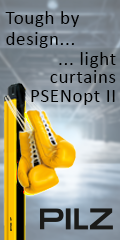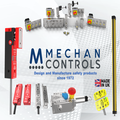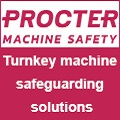
Posted to News on 19th Nov 2024, 15:00
Understanding the machined spring and its benefits
The next time you require a spring in a critical or high duty cycle environment, the machined spring from may be the answer to your design problems, as the experts at ABSSAC explain.

Machined from one piece of material and tailored to meet exact customer size and performance requirement, the machined spring is a formidable package. And for those engineers familiar with the traditional wire-wound spring format, the machined spring offers a new way of looking at both performance and attachment.
When considering the dynamics of the machined spring ABSSAC looks at the six possible cartesian coordinates, those being X,Y,Z and then the (RO=rotation) ROTX, ROTY and ROTZ When applying the Cartesian coordinates to a traditional wire-wound spring, it will try to deliver all six axis potentials when it is asked to move. When applying the cartesian coordinates to a machined spring it can be designed to be a single degree of freedom system, i.e. delivering motion in only one of the possible six axes.
However, with its unlimited uniqueness, the machined spring can also be machined to deliver multi-cartesian axis potentials. For example, some applications have demanded an accurate mixture of compression, lateral and torsional spring rates.
In considering the use of machined springs, two main advantages are immediately apparent. Machined springs can provide very precise, linear deflection rates because virtually all residual stresses are eliminated. (Normal rate accuracy is +/-10% but ABSSAC has regularly obtained better than 1% for the more demanding applications). Secondly, the machined spring also enables the designer to amalgamate attachments into the design, often incorporating parts of the spring assembly into a single part construction.
Why are machined springs so unique? Quite simply, it is possible to have more than one spring coil in the single piece construction; these multi start configurations deliver outstanding performance advantages. In fact, the machined spring's capability to be supplied in multiple start spring coil configurations takes the performance and reliability to levels not achievable by the traditional wire-wound spring format.
The most common configuration is the single start spring, which consists of a single continuous coil element. The coil starts at one end and terminates at the other end, much like its wire-wound counterpart. The double start or indeed a triple start spring has two or three intertwined continuous coil elements, still within the same single part construction.
In effect, this puts multiple independent helixes in the same cylindrical plane, which provides totally enhanced end face parallelism. On multiple start machined springs, virtually all internal moments are resolved within the spring itself and the double start machined spring configuration is the closest single cartesian coordinate deflection part available with today's technology.
Machined torsion springs
As previously discussed, machined springs can provide very precise, linear deflection rates because virtually all residual stresses are eliminated. The stress found in machined torsion springs is predominantly a pure bending stress providing a more reliable and accurate spring rate. So why are they such an advantage over wire-wound equivalents?
Most wound torsion springs can achieve a rate tolerance of around 15%; the machined alternative can easily achieve 10% on rate and can be tuned to +/-2% for the more demanding applications.
The most common machined torsion spring configuration is the single start spring, and ABBSAC can supply both unwind and wind-up torsion springs. In both cases the spring rates achieved are as linear as the geometry will permit.
However, it is not only the accuracy of spring rate which is an advantage, since the part is machined, we can incorporate any form of end attachment into the torsion spring. In the wire-wound torsion spring format, tangs are produced by bending the last portion of wire into a set position. These tangs are bent inward or outward upon which a force can be applied. This not only limits the actual attachment designs available but induces high stress into this attachment area. In the machined torsion spring, however, the tang is integral and without stress making it a far more rugged and reliable attachment.
Tang usage is designed to provide a moment on a torsion spring. To accomplish this, a force at a distance is employed. The spring provides the moment reaction, but there needs to be an additional reaction to the force. Typically, with wire-wound springs, using a tang, they are called upon to resolve this force by the ID or OD of the spring rubbing on a guide.
With a machined torsion spring, the application of a moment is possible using a pure couple. Some examples of this are double tangs (external internal and longitudinal), slot, splines (internal and external) and bolt circle configurations. How you attach the machined torsion spring is often up to your imagination, perhaps incorporating additional parts of the system into the spring design.
However, it is important to remember that the full breadth of machined attachments that resolve a pure moment are uniquely available.
Machined compression springs
Let's look now at machined compression or extension springs. When a force is applied to compression and extension springs, a single start spring provides a reaction force plus a moment. On multiple start springs, virtually all internal moments are resolved within the spring itself, which translates into excellent compression or extension parallelism. Multiple start spring configurations also significantly unify the lateral bending and lateral translation forces and moments around the spring's circumference given a lateral deflection.
Double and triple start variants make the loading points irrelevant on the radius of the spring but increase the accuracy of parallelism. Multiple starts as high as five have been employed to unify the lateral reaction forces of machined springs. Normal rate accuracy is +/-10% but rates better than 1% are also possible.
Another advantage of multiple start spring elements is that they not only provide redundant elastic elements should a failure occur, but a failed element (coil) will be physically trapped by the remaining coils and in many cases will allow the albeit reduced function of the spring design to still operate.
Advantages of the machined spring in a nutshell include:
- Compression, extension, torsion, lateral bending and translation formats available
- Predictable linear rates are available to meet application requirements
- 10% as standard, down to better than 1% repeatable performance rate tolerance
- Virtually no residual stresses affecting performance
- Special or custom end attachments can be incorporated into the one piece design
- Single, or the unique double and triple coil start spring versions
- Titanium, steels, high strength steels and engineering plastics can be utilised
- Unbeatable parallelism and perpendicularity improves reliability and performance
The advantages of the machined spring product are numerous having proven itself in medical, aerospace, semiconductor and motor-sport industries to name a few. Wherever a wire-wound spring is not able to meet your performance criteria or a new spring design requires ultimate accuracy and repeatability, the machined spring is the ideal partner.
So the next time you require a spring in a critical or high duty cycle environment, the machined spring from ABSSAC may be the answer to your design problems.
Want the latest machine building news straight to your inbox? Become a MachineBuilding member for free today >>















